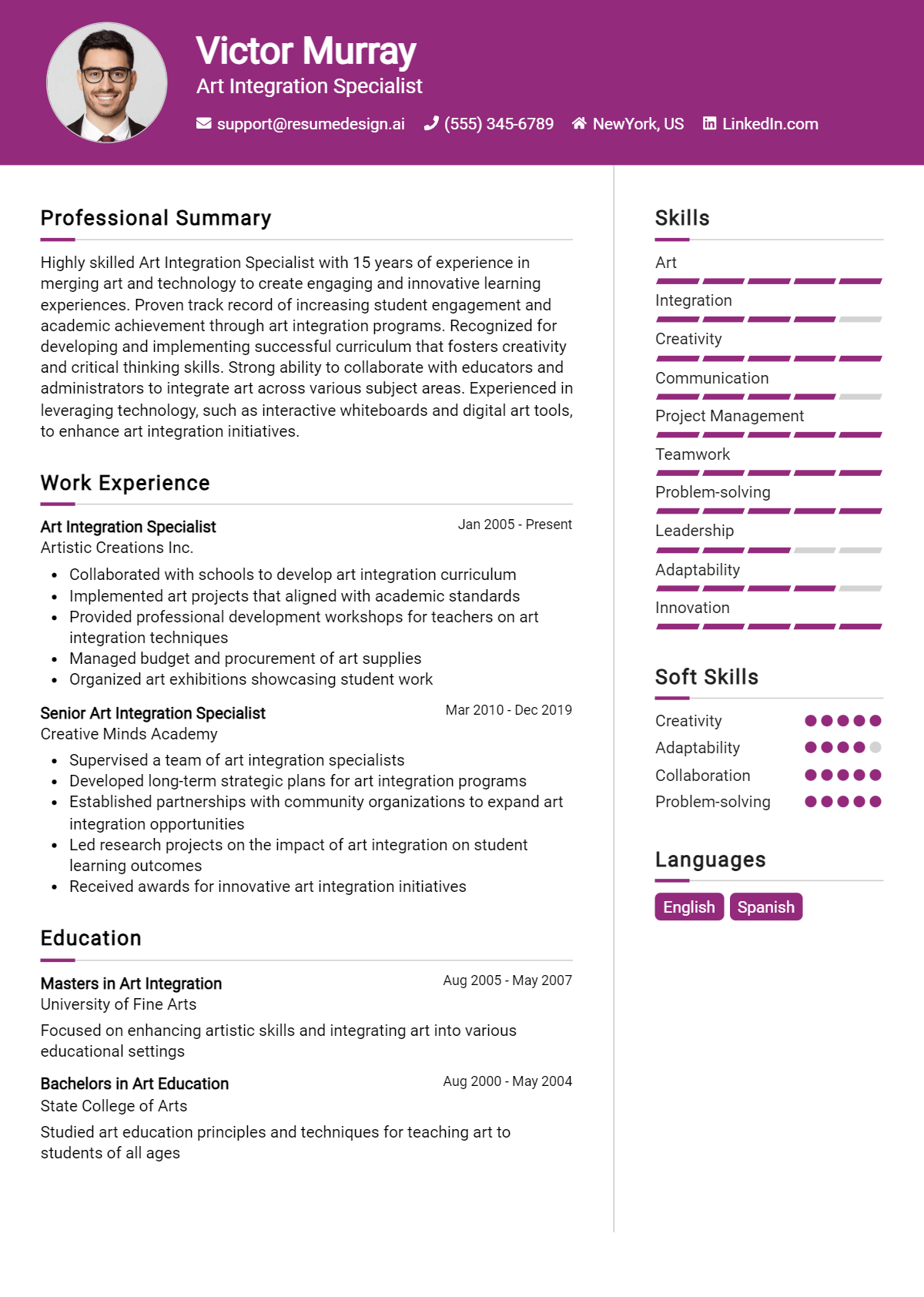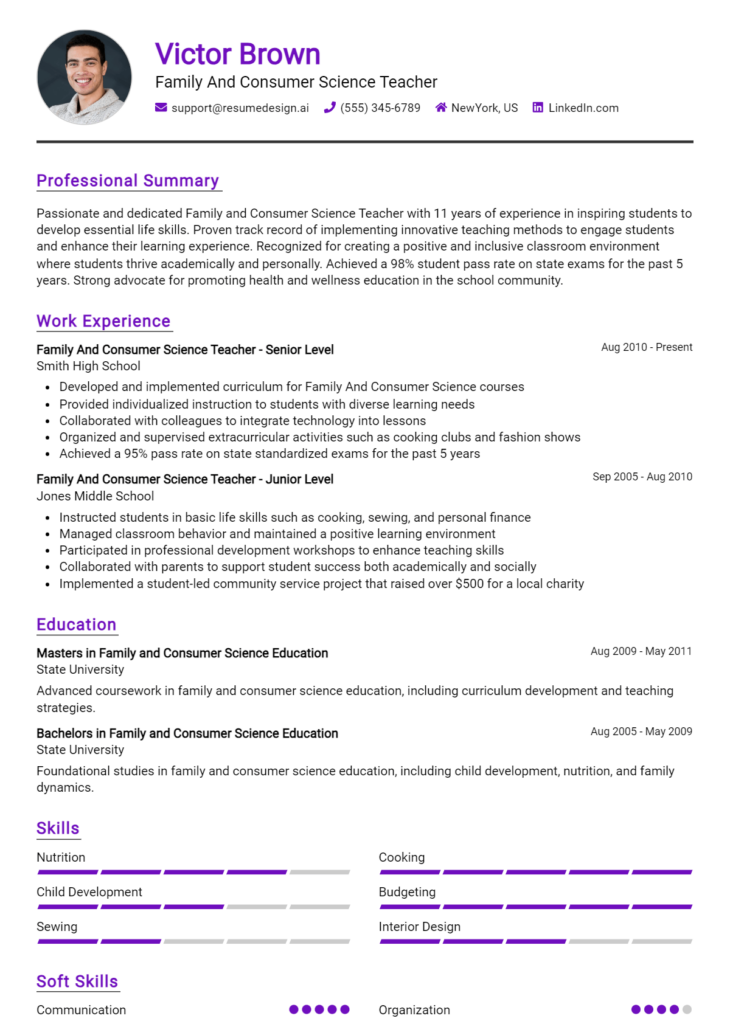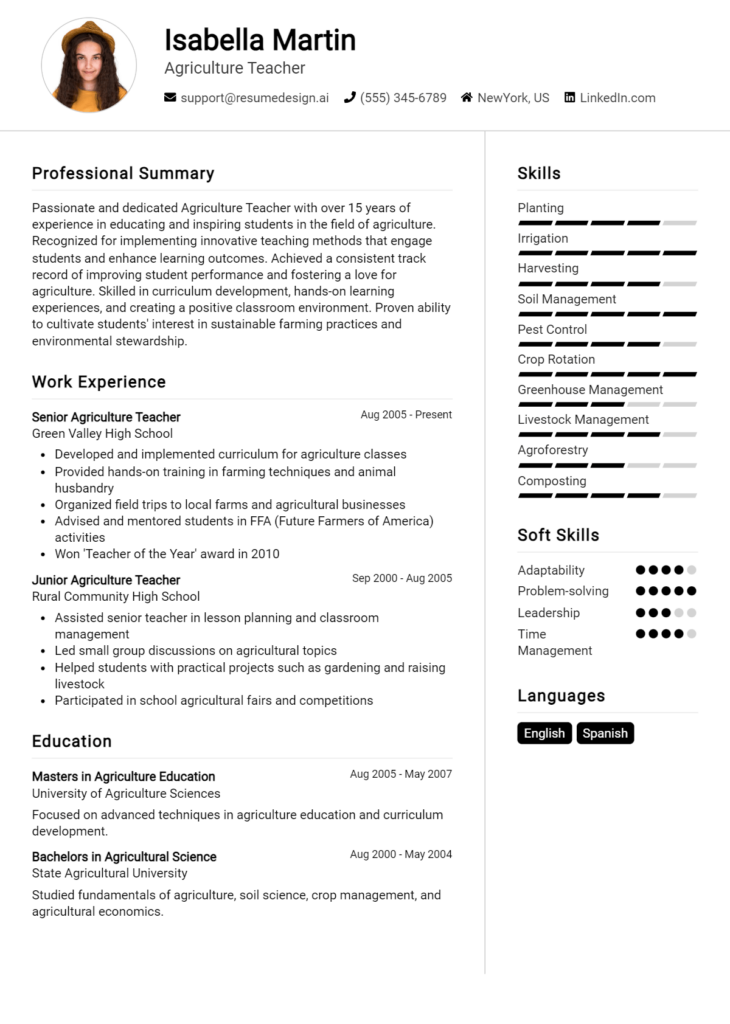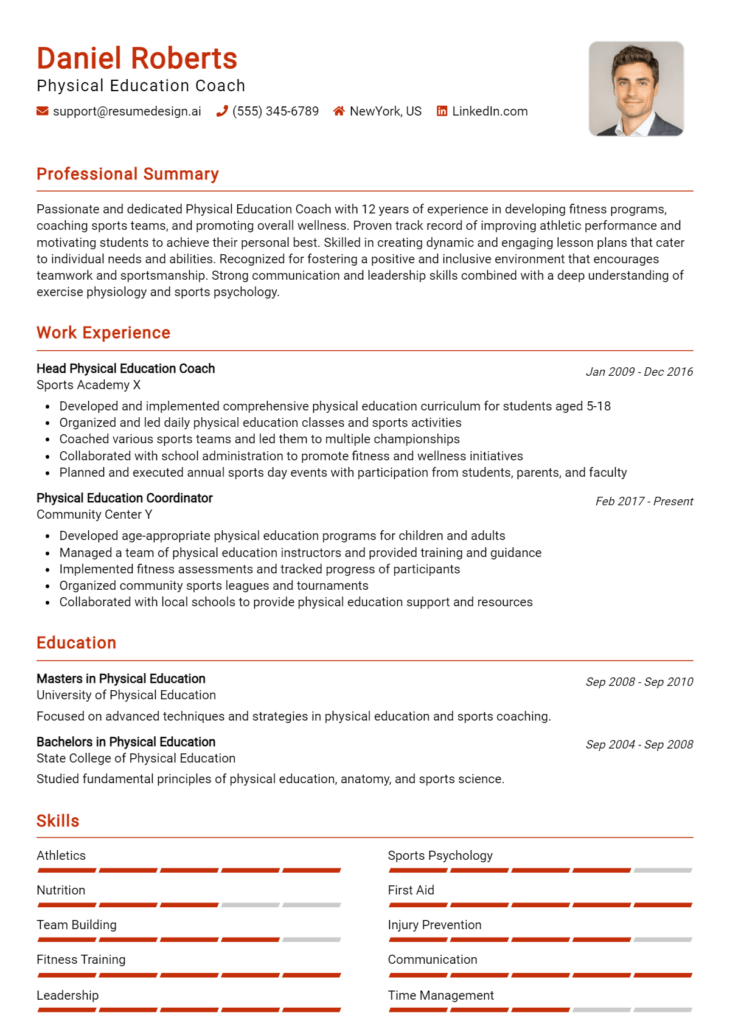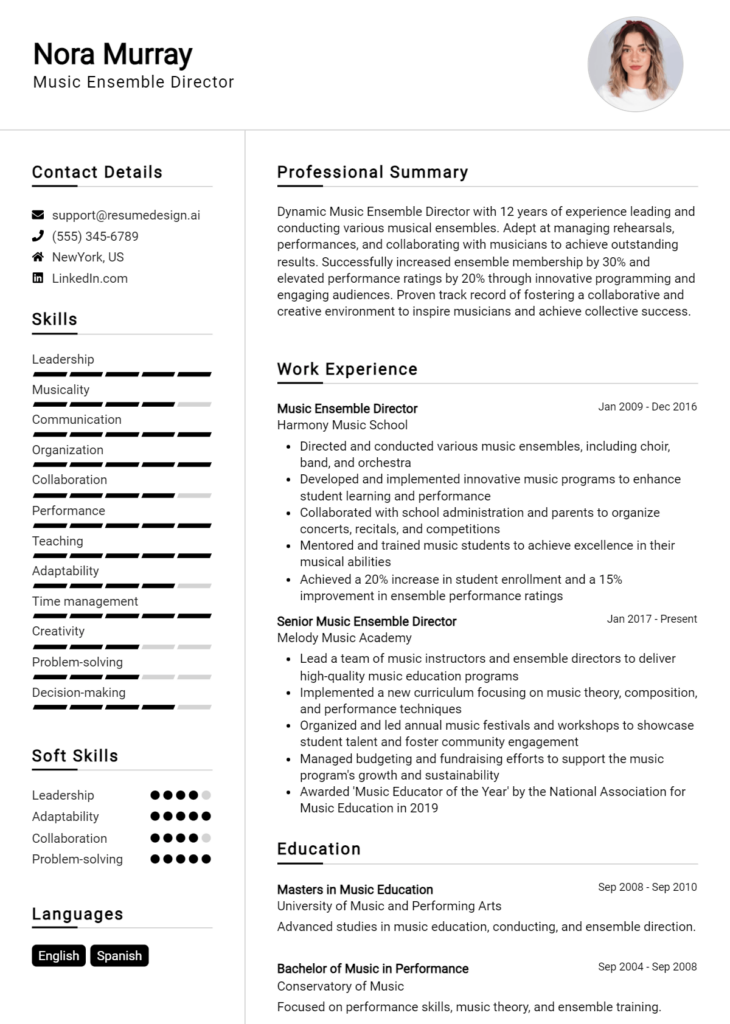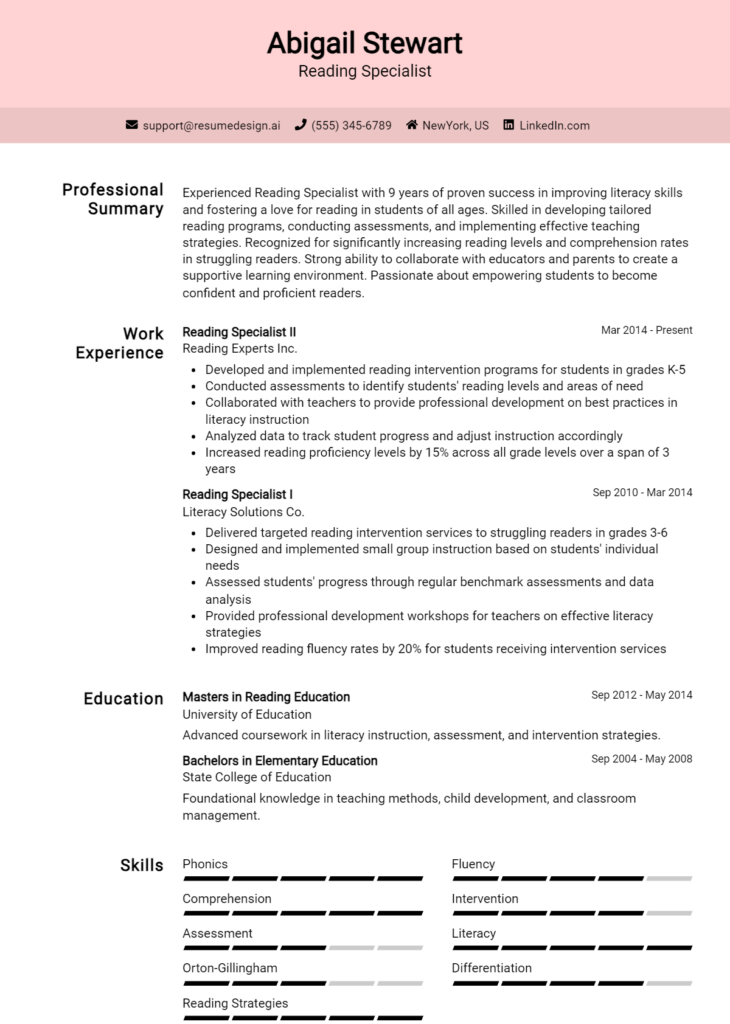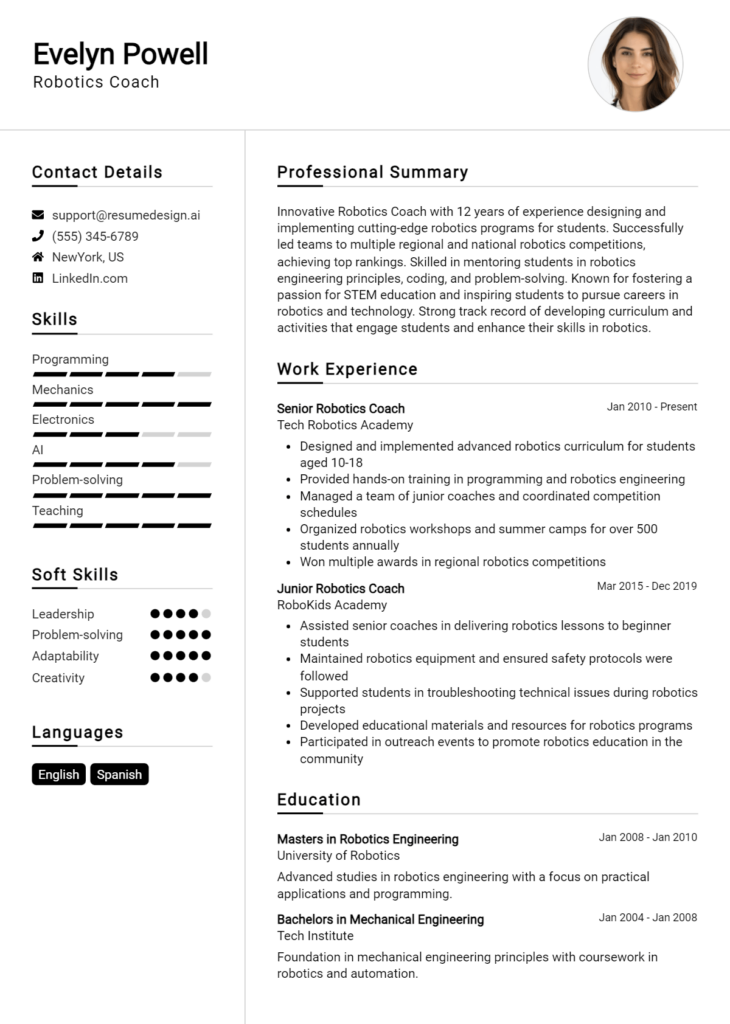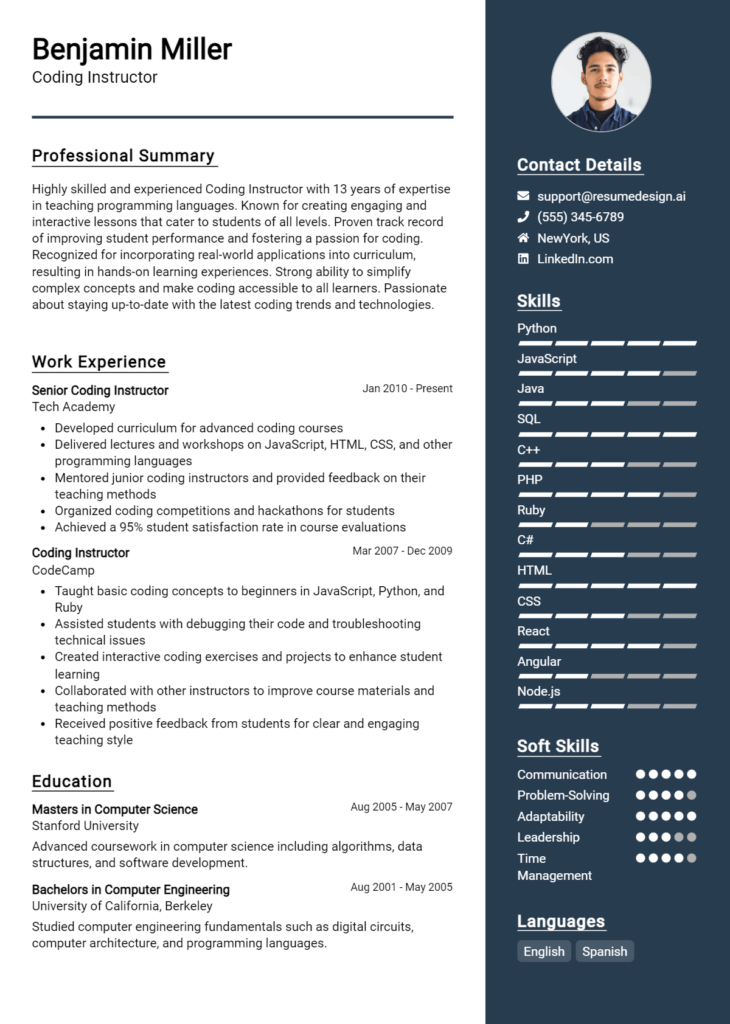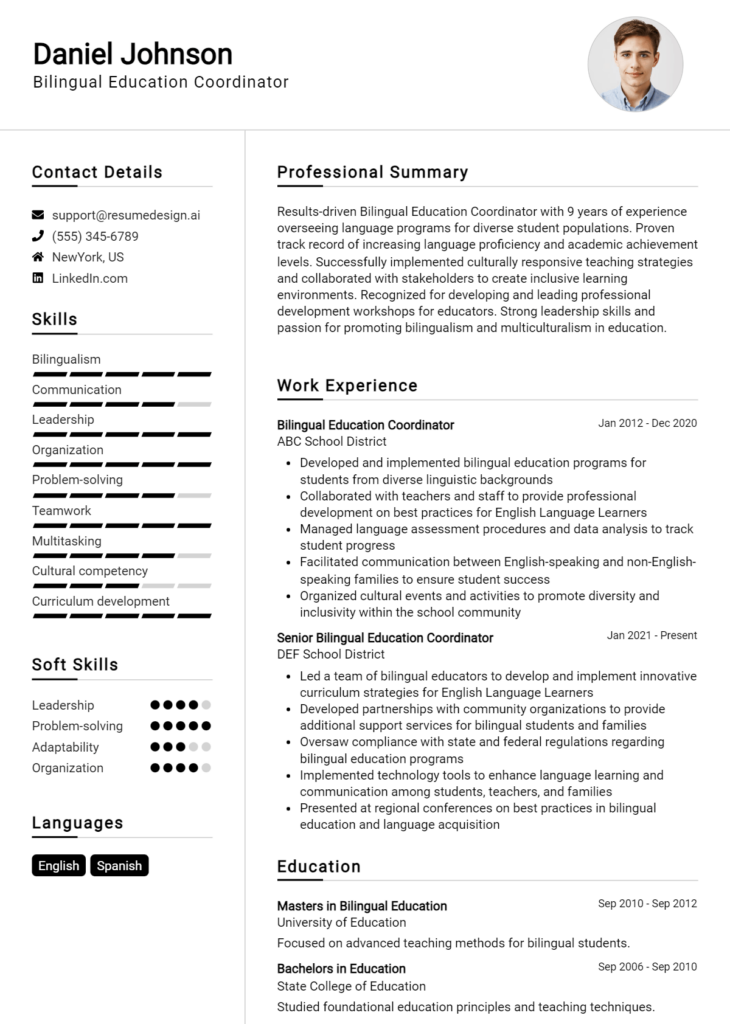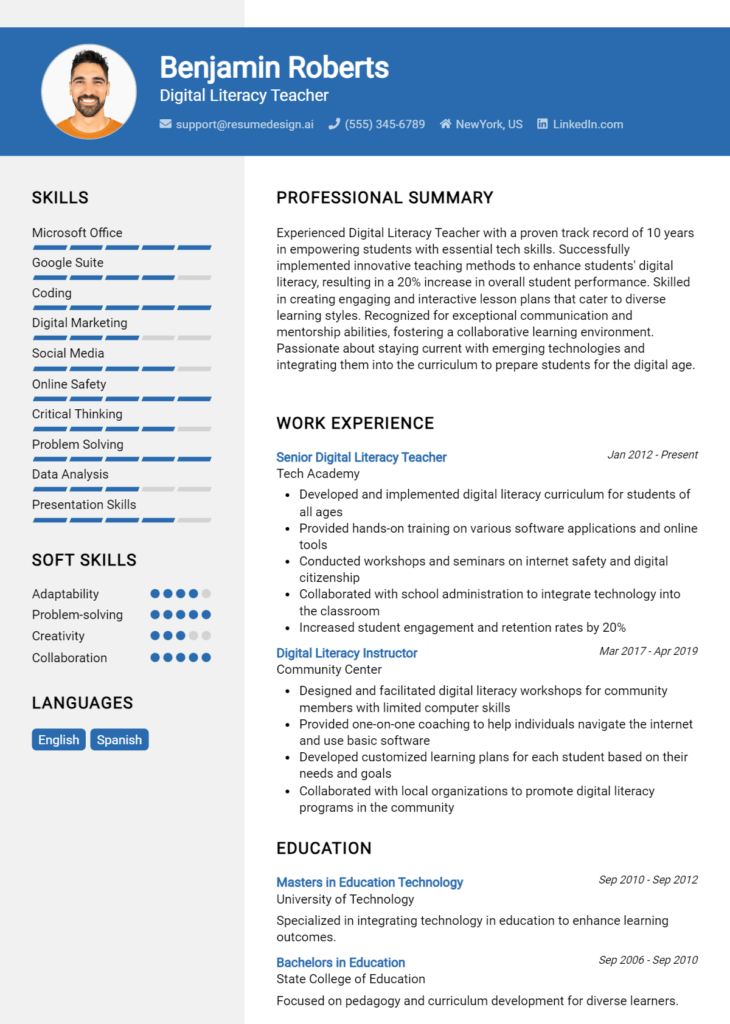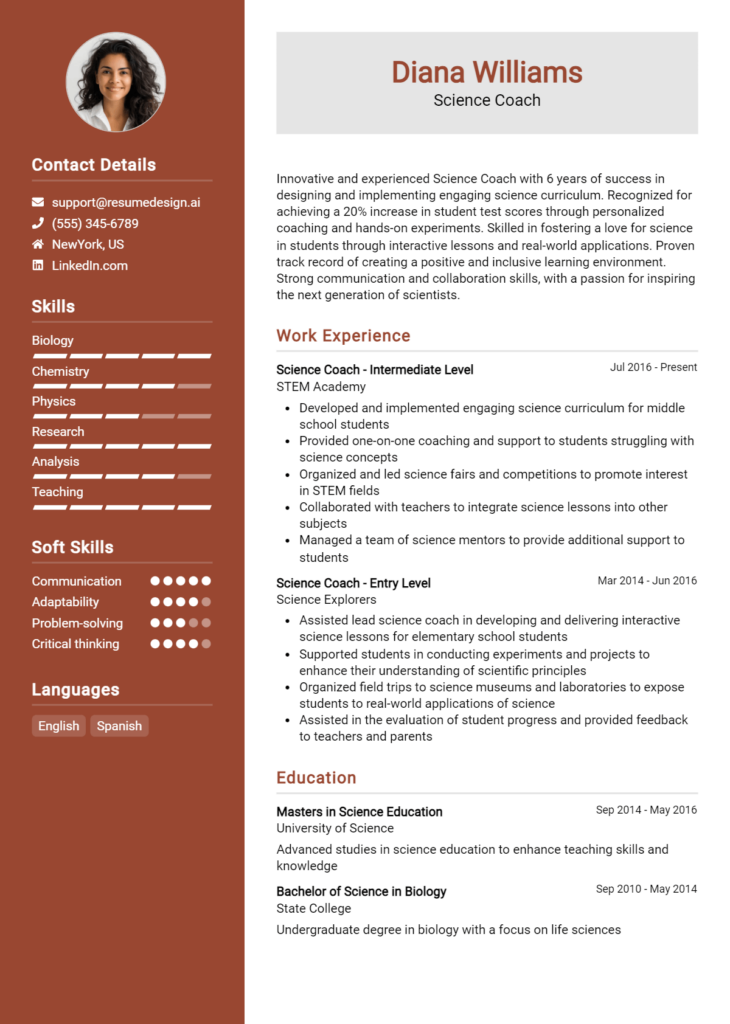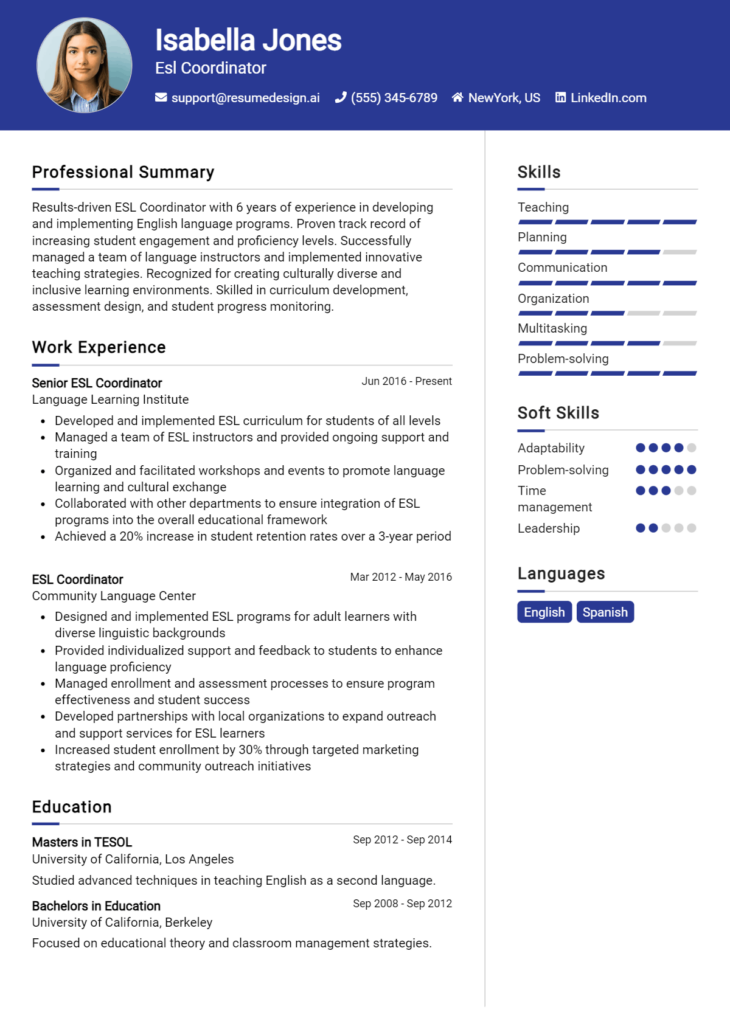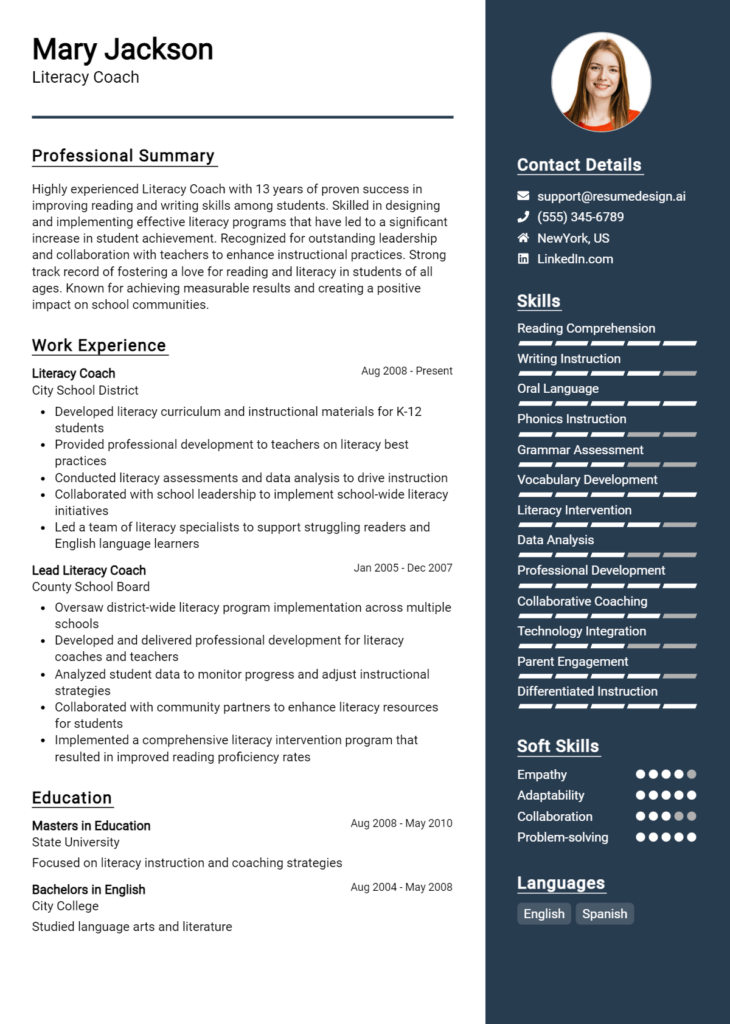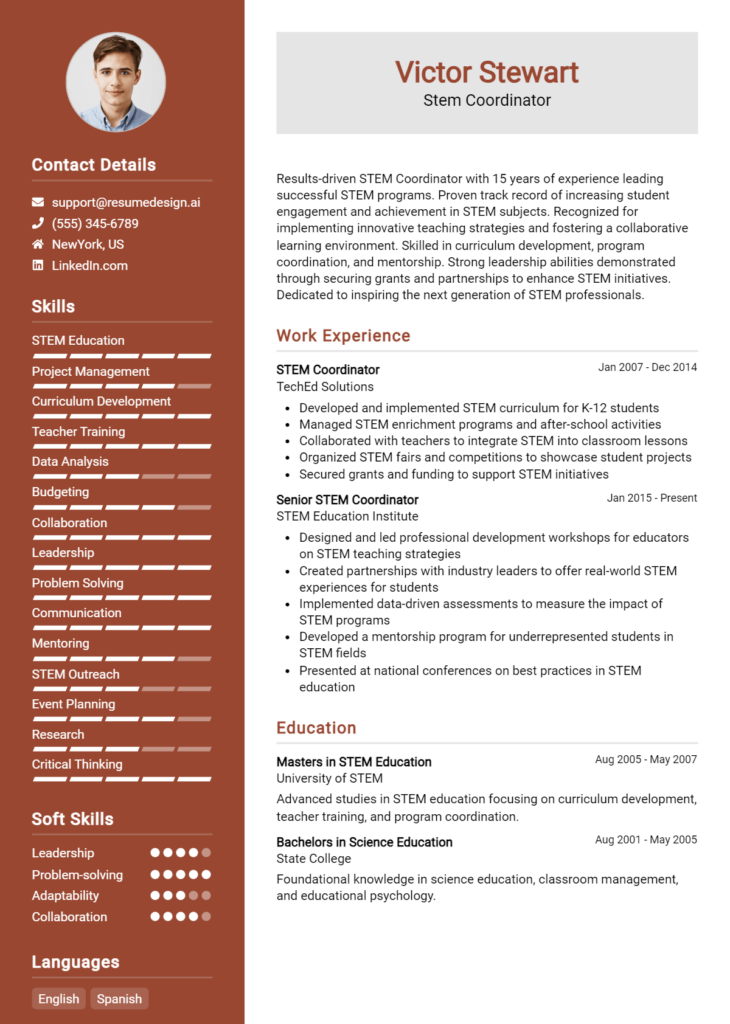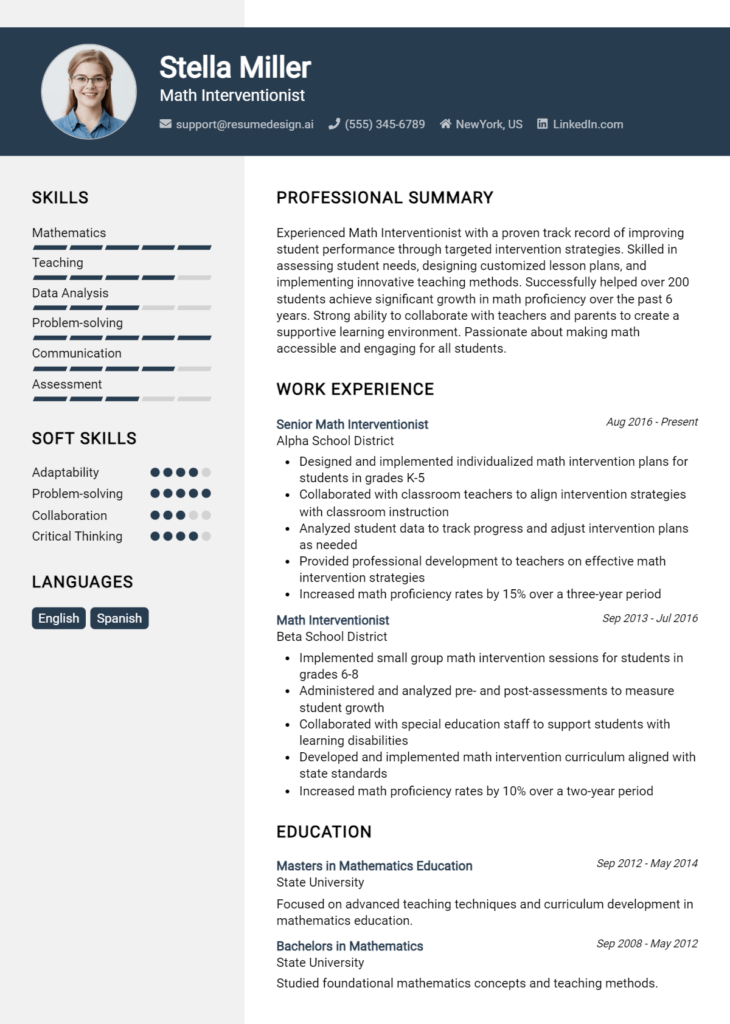Art Integration Specialist Core Responsibilities
An Art Integration Specialist plays a crucial role in bridging artistic vision with operational execution across various departments. They collaborate closely with creative teams, educators, and administrative staff to integrate art into diverse projects, ensuring alignment with organizational goals. Essential skills include technical proficiency in art mediums, strong problem-solving abilities, and effective communication. A well-structured resume highlighting these qualifications can significantly enhance an applicant's chances of showcasing their impact on the organization’s creative and operational success.
Common Responsibilities Listed on Art Integration Specialist Resume
- Collaborate with interdisciplinary teams to integrate art into educational programs.
- Develop and implement art-based curricula and workshops.
- Conduct assessments to evaluate the effectiveness of art integration.
- Design and facilitate professional development for educators on art integration techniques.
- Manage art projects from conception to execution, ensuring alignment with goals.
- Research and identify resources and materials for art integration.
- Foster partnerships with local artists and organizations.
- Monitor and report on the impact of art integration initiatives.
- Organize community events to promote art awareness and engagement.
- Provide technical support for art-related technologies and tools.
- Curate exhibitions and displays that highlight integrated art projects.
- Advocate for the importance of art in education and organizational settings.
High-Level Resume Tips for Art Integration Specialist Professionals
A well-crafted resume is essential for Art Integration Specialist professionals, as it serves as the first impression a candidate makes on potential employers. In a competitive job market, your resume must not only reflect your skills and achievements but also convey your passion for integrating art into educational and community settings. It’s your opportunity to showcase how your unique background and expertise can contribute to enhancing creative learning environments. This guide will provide practical and actionable tips specifically tailored for Art Integration Specialist professionals, helping you stand out in your job application process.
Top Resume Tips for Art Integration Specialist Professionals
- Tailor your resume to the job description by highlighting relevant keywords and phrases that match the specific requirements of the position.
- Showcase your relevant experience, including previous roles that involved art integration, curriculum development, or community engagement.
- Quantify your achievements by using metrics such as the number of programs developed, participants engaged, or improvements in student creativity and engagement levels.
- Highlight industry-specific skills such as project management, collaboration with artists, and knowledge of educational standards related to art integration.
- Include a professional summary that succinctly encapsulates your expertise and passion for art integration, setting the tone for the rest of your resume.
- Incorporate relevant certifications, training, or workshops that demonstrate your commitment to professional development in the field of art integration.
- Utilize action verbs to begin bullet points, showcasing your contributions and impact in a dynamic and engaging manner.
- Ensure your resume is visually appealing and easy to read, reflecting an understanding of design principles that are essential in the art field.
- Consider including a portfolio link or a section highlighting select projects that exemplify your skills in art integration.
By implementing these tips, you can significantly increase your chances of landing a job in the Art Integration Specialist field. A well-structured, tailored resume that effectively showcases your skills and achievements will not only catch the attention of hiring managers but also demonstrate your dedication to the art and education sectors.
Why Resume Headlines & Titles are Important for Art Integration Specialist
In the competitive field of art integration, a well-crafted resume headline or title plays a crucial role in capturing the attention of hiring managers. As an Art Integration Specialist, your resume headline serves as the first impression, distilling your key qualifications and unique skills into a single impactful phrase. A strong headline not only grabs attention but also succinctly conveys your expertise and relevance to the position, making it an essential element of your application. It should be concise, relevant, and tailored specifically to the job you are applying for, effectively setting the tone for the rest of your resume.
Best Practices for Crafting Resume Headlines for Art Integration Specialist
- Keep it concise: Aim for one impactful phrase that communicates your core strengths.
- Be role-specific: Tailor the headline to the specific position you are applying for.
- Highlight key skills: Include essential skills or certifications that are relevant to art integration.
- Use action verbs: Start with strong action verbs to convey initiative and impact.
- Include measurable outcomes: If possible, hint at achievements or results you’ve accomplished.
- Avoid jargon: Use clear, accessible language that resonates with hiring managers.
- Make it engaging: Use dynamic words to draw in the reader’s interest.
- Reflect your passion: Infuse your headline with your enthusiasm for art and education integration.
Example Resume Headlines for Art Integration Specialist
Strong Resume Headlines
Innovative Art Integration Specialist Enhancing Curriculum with Creative Solutions
Experienced Educator and Art Integration Expert with Proven Track Record of Student Engagement
Dynamic Art Integration Specialist Committed to Fostering Creativity in Educational Settings
Passionate Art Integration Advocate with 10+ Years in Transformative Learning Environments
Weak Resume Headlines
Looking for Work
Art Specialist
Experienced Professional
Strong headlines are effective because they convey specific, relevant information about a candidate’s expertise and passion, making them memorable and appealing to hiring managers. They set a positive tone for the resume and invite further exploration of the candidate's qualifications. In contrast, weak headlines tend to be vague and generic, failing to communicate any unique value or connection to the role, which can leave hiring managers unimpressed and disengaged. A compelling headline can be the difference between standing out in a crowded field or being overlooked entirely.
Writing an Exceptional Art Integration Specialist Resume Summary
A well-crafted resume summary is essential for an Art Integration Specialist, as it serves as the first impression to hiring managers. This concise section quickly highlights key skills, relevant experience, and notable accomplishments, effectively capturing attention in a competitive job market. A strong summary not only showcases the candidate’s qualifications but is also tailored to align with the specific requirements of the job, ensuring that it resonates with the hiring team and sets the stage for the rest of the resume.
Best Practices for Writing a Art Integration Specialist Resume Summary
- Start with a strong opening statement that captures your professional identity and experience.
- Quantify your achievements where possible to demonstrate the impact of your work.
- Focus on relevant skills that align with the job description and requirements.
- Use action verbs to convey your contributions and initiatives effectively.
- Keep it concise, ideally between 3 to 5 sentences, to maintain the reader's attention.
- Tailor the summary for each application to reflect the specific skills and experiences that the employer is seeking.
- Incorporate industry-specific terminology to showcase your expertise and familiarity with the field.
- Highlight any unique contributions or innovative approaches you’ve implemented in previous roles.
Example Art Integration Specialist Resume Summaries
Strong Resume Summaries
Dynamic Art Integration Specialist with over 7 years of experience in developing creative curriculum that enhances student engagement and learning outcomes. Successfully integrated visual arts into STEM programs, resulting in a 30% increase in student participation in art-related projects.
Passionate Art Integration Specialist with a proven track record of collaborating with educators to design interdisciplinary lessons. Achieved a 25% improvement in student assessments through innovative art projects that supported literacy and critical thinking skills.
Results-driven Art Integration Specialist skilled in fostering partnerships with local artists and cultural organizations. Spearheaded a community art initiative that engaged over 500 students, enhancing their creative skills and boosting attendance by 15%.
Weak Resume Summaries
Experienced educator with a background in arts integration. I have worked in various schools and have some knowledge of art programs.
Art Integration Specialist looking for opportunities to use my skills in a new environment. I believe in the importance of arts in education.
The strong resume summaries are effective because they provide concrete details about the candidate's achievements, quantify results, and directly relate to the job role of an Art Integration Specialist. They use specific language that highlights accomplishments and skills relevant to the position. In contrast, the weak summaries lack specificity and measurable outcomes, making them too vague and generic to leave a lasting impression on hiring managers.
Work Experience Section for Art Integration Specialist Resume
The work experience section of an Art Integration Specialist resume is pivotal in demonstrating a candidate's qualifications and suitability for the role. This section not only highlights the technical skills acquired throughout various positions but also showcases the candidate's ability to manage teams and deliver high-quality art projects. By quantifying achievements and aligning work history with industry standards, candidates can effectively illustrate their impact and value in previous roles, making a compelling case to potential employers.
Best Practices for Art Integration Specialist Work Experience
- Highlight technical skills relevant to art integration, such as proficiency in software tools and methodologies.
- Use quantifiable metrics to demonstrate success, such as the number of projects completed or percentage increases in engagement.
- Showcase leadership experience by detailing roles in managing teams or directing projects.
- Include specific examples of collaboration with artists, designers, and other stakeholders.
- Tailor your experience to align with industry standards and the specific requirements of the job description.
- Focus on outcomes and the impact of your work on the overall project or organization.
- Utilize action verbs to convey a sense of initiative and accomplishment.
- Keep descriptions concise but informative, ensuring clarity without unnecessary jargon.
Example Work Experiences for Art Integration Specialist
Strong Experiences
- Led a team of 5 artists to create a multimedia installation for a major arts festival, resulting in a 30% increase in visitor engagement compared to previous years.
- Successfully managed the integration of digital art into a community outreach program, reaching over 1,000 participants and receiving a 95% satisfaction rate in post-event surveys.
- Developed and implemented a new workflow for art project management that increased project delivery speed by 40%, while maintaining high-quality standards.
- Collaborated with cross-functional teams to design an interactive exhibit, which earned the “Best Exhibition” award at the National Art Conference.
Weak Experiences
- Assisted in various art projects without specific roles or responsibilities defined.
- Worked on team projects that were generally well-received, but did not provide any measurable outcomes.
- Helped with community art events, but did not detail the impact or contributions made.
- Participated in brainstorming sessions for art initiatives with little to no follow-through or results documented.
The examples provided illustrate the difference between strong and weak experiences. Strong experiences are characterized by clear, quantifiable outcomes and specific responsibilities that demonstrate leadership and collaboration. They present a narrative of success and impact, making the candidate's contributions tangible to potential employers. Conversely, weak experiences lack clarity and measurable results, failing to convey the candidate's true capabilities and leaving the employer with a vague impression of their skills and contributions.
Education and Certifications Section for Art Integration Specialist Resume
The education and certifications section of an Art Integration Specialist resume plays a crucial role in establishing the candidate's qualifications and expertise in the field. This section not only highlights the academic background that underpins the candidate’s knowledge of art integration principles and practices but also showcases industry-relevant certifications that demonstrate commitment to professional development. Including relevant coursework and specialized training in this section can significantly enhance the candidate's credibility and alignment with the demands of the job role, making a compelling case for their suitability to potential employers.
Best Practices for Art Integration Specialist Education and Certifications
- Prioritize relevance by including degrees and certifications directly related to art integration and education.
- Provide specific details about coursework that supports your art integration skills, such as classes in pedagogy, art history, or curriculum development.
- Highlight advanced certifications from recognized institutions, as these can set you apart from other candidates.
- Include any continuing education courses or workshops that reflect your commitment to staying current in the field.
- Organize your education and certifications chronologically, starting with the most recent to show your latest qualifications first.
- Use clear headings and bullet points to enhance readability and ensure key information stands out.
- Consider adding any awards or honors received in relation to your educational achievements or professional development.
- Keep the information concise and focused, avoiding excessive details that may detract from the main qualifications.
Example Education and Certifications for Art Integration Specialist
Strong Examples
- M.A. in Art Education, University of Fine Arts, 2022
- Certified Art Integration Specialist (CAIS), National Art Integration Association, 2021
- Completed coursework in Creative Curriculum Development and Arts-Based Learning Strategies
- B.A. in Visual Arts with a Minor in Education, State University, 2020
Weak Examples
- B.A. in Business Administration, 2015
- Certification in Graphic Design, 2018 (not relevant to art integration)
- High School Diploma, 2010
- Outdated workshop on Traditional Art Methods, 2010
The strong examples are considered effective because they directly relate to the skills and knowledge necessary for an Art Integration Specialist, showcasing both relevant degrees and certifications that reflect an understanding of the field. In contrast, the weak examples lack relevance to art integration, either because they focus on unrelated fields or are outdated, thereby failing to demonstrate the candidate's suitability for the role.
Top Skills & Keywords for Art Integration Specialist Resume
As an Art Integration Specialist, showcasing a diverse set of skills on your resume is crucial for standing out in a competitive job market. This role requires a unique blend of creative and analytical abilities, enabling professionals to effectively incorporate art into various educational or organizational frameworks. Highlighting both hard and soft skills not only demonstrates your expertise but also your adaptability and collaborative spirit. By emphasizing these skills, you can convey your potential to enhance learning experiences and foster a deeper appreciation for the arts within your community. For more on essential skills, explore this comprehensive guide on skills that can bolster your resume.
Top Hard & Soft Skills for Art Integration Specialist
Soft Skills
- Creativity
- Communication
- Collaboration
- Empathy
- Adaptability
- Problem-solving
- Critical thinking
- Attention to detail
- Time management
- Interpersonal skills
- Leadership
- Cultural awareness
- Conflict resolution
- Patience
- Flexibility
Hard Skills
- Curriculum development
- Art education techniques
- Project management
- Knowledge of various art forms (visual arts, performing arts, etc.)
- Grant writing and fundraising
- Art program evaluation
- Digital media proficiency
- Educational technology tools
- Research skills
- Data analysis
- Event planning
- Budgeting
- Marketing strategies for art programs
- Knowledge of art history
- Community engagement strategies
- Visual communication
- Art therapy techniques
Incorporating these skills into your resume not only enhances its appeal but also aligns your qualifications with the expectations of potential employers. For insights on effectively showcasing your work experience, consider how you can demonstrate your skills through past roles and projects.
Stand Out with a Winning Art Integration Specialist Cover Letter
I am excited to apply for the Art Integration Specialist position at [Company Name]. With a strong background in both art education and interdisciplinary curriculum development, I am passionate about creating innovative strategies that integrate artistic practices into academic subjects. My experience as an art educator has equipped me with the skills to foster creativity and critical thinking, while my collaboration with various educators has allowed me to understand the importance of blending art with different disciplines to enhance student engagement and learning outcomes.
In my previous role at [Previous Institution/Organization], I successfully developed and implemented a comprehensive art integration program that increased student participation and improved overall academic performance. By collaborating with teachers from multiple subjects, I designed lesson plans that not only incorporated visual arts but also aligned with educational standards across the curriculum. This approach not only enriched students’ learning experiences but also nurtured their ability to express themselves artistically while grasping complex concepts in subjects like science and history.
I am particularly drawn to [Company Name] because of its commitment to fostering creativity and innovation in education. I am eager to bring my expertise in art integration and my collaborative spirit to your team. I am confident that my ability to communicate effectively with both students and educators will contribute to creating an inclusive and inspiring learning environment. I look forward to the opportunity to discuss how I can support [Company Name] in its mission to enhance education through the arts. Thank you for considering my application.
Common Mistakes to Avoid in a Art Integration Specialist Resume
When crafting a resume for the position of an Art Integration Specialist, candidates often overlook key elements that could enhance their chances of standing out. A well-tailored resume not only showcases relevant skills and experiences but also demonstrates an understanding of the specific demands of the role. Below are some common mistakes to avoid when creating an Art Integration Specialist resume:
Generic Objective Statement: Using a one-size-fits-all objective can make your resume feel impersonal. Tailor your objective to reflect your passion for art integration and how your skills align with the organization’s goals.
Lack of Specificity: Failing to provide specific examples of past projects or experiences can weaken your application. Use quantifiable achievements to illustrate your impact, such as the number of students impacted or projects completed.
Ignoring Keywords: Not including relevant industry keywords can hinder your resume’s performance in applicant tracking systems. Research the job description and incorporate key terms that highlight your expertise in art integration.
Overloading with Jargon: While it's important to showcase knowledge, using too much technical jargon can alienate the reader. Strive for a balance that demonstrates your expertise while remaining accessible to varied audiences.
Neglecting Design: As an Art Integration Specialist, your resume should reflect your design sensibility. Avoid clutter and ensure a clean, visually appealing layout that aligns with your artistic background.
Omitting Soft Skills: Technical skills are crucial, but art integration also requires strong communication, collaboration, and problem-solving abilities. Highlight these soft skills to show your capacity for teamwork and creativity.
Not Customizing for Each Application: Sending the same resume for multiple applications can diminish your chances. Customize your resume for each position to reflect the specific requirements and culture of the organization.
Failing to Proofread: Spelling and grammatical errors can undermine your professionalism. Always proofread your resume multiple times or have someone else review it to ensure clarity and accuracy.
Conclusion
As we conclude our exploration of the Art Integration Specialist role, it's essential to reflect on the critical aspects covered. This position requires a unique blend of artistic talent, educational expertise, and collaborative skills to effectively incorporate art into various educational settings. Art Integration Specialists play a vital role in enhancing student engagement and fostering creativity, making them invaluable assets to schools and educational organizations.
To ensure that you present yourself as a competitive candidate in this field, it's crucial to have an impressive resume that highlights your skills and experiences effectively. We encourage you to take a moment to review and refine your Art Integration Specialist resume.
Utilizing the right tools can make all the difference in crafting a standout resume. Explore our comprehensive resume templates that can provide a solid framework for your document. Additionally, consider using our intuitive resume builder to customize your resume with ease. If you're looking for inspiration, check out our resume examples tailored specifically for creative professionals. Don’t forget the importance of a compelling cover letter; our cover letter templates can help you put your best foot forward.
Take action now and ensure your resume reflects your qualifications and passion for art integration. Your next opportunity awaits!

